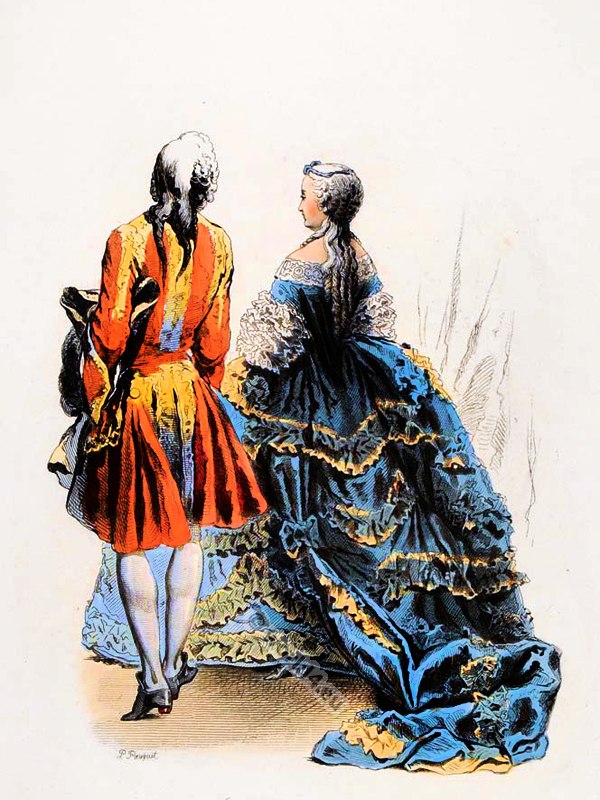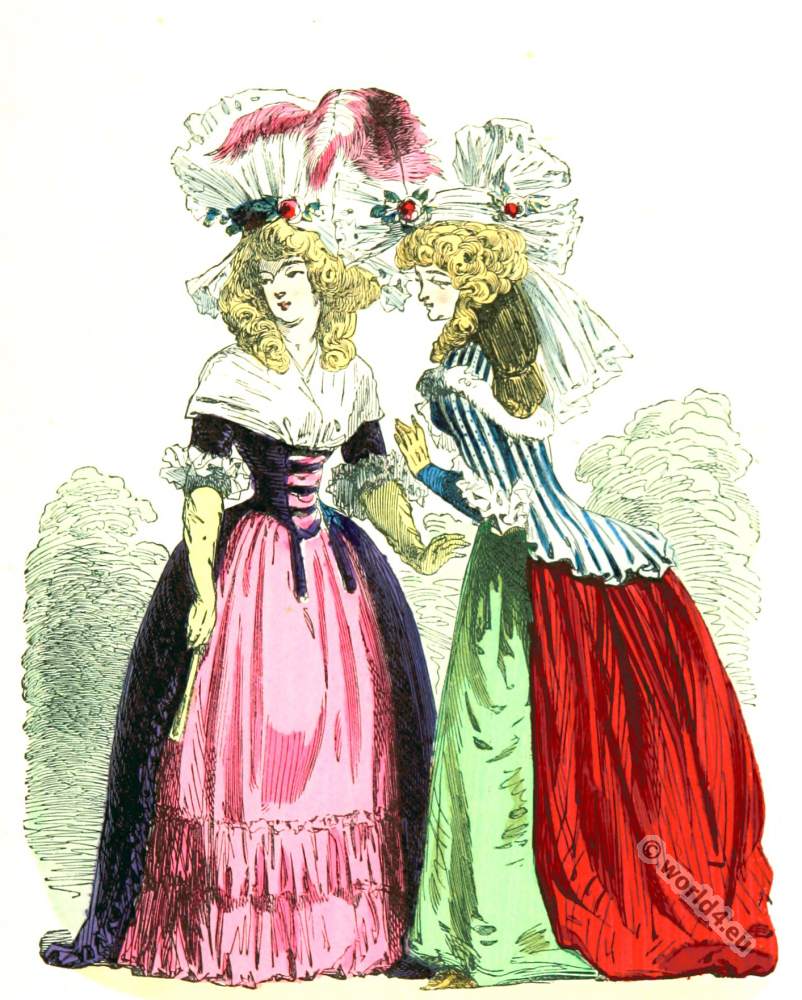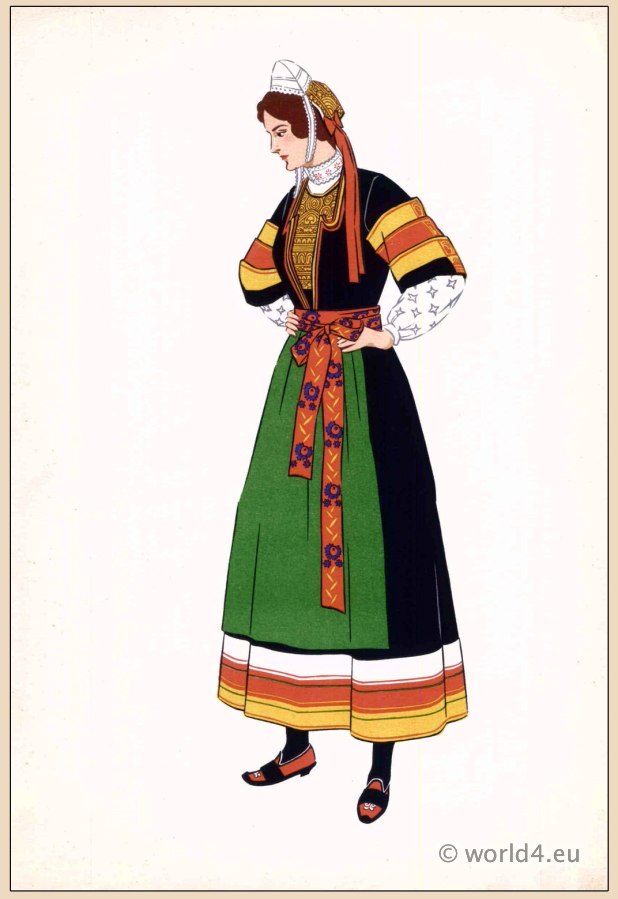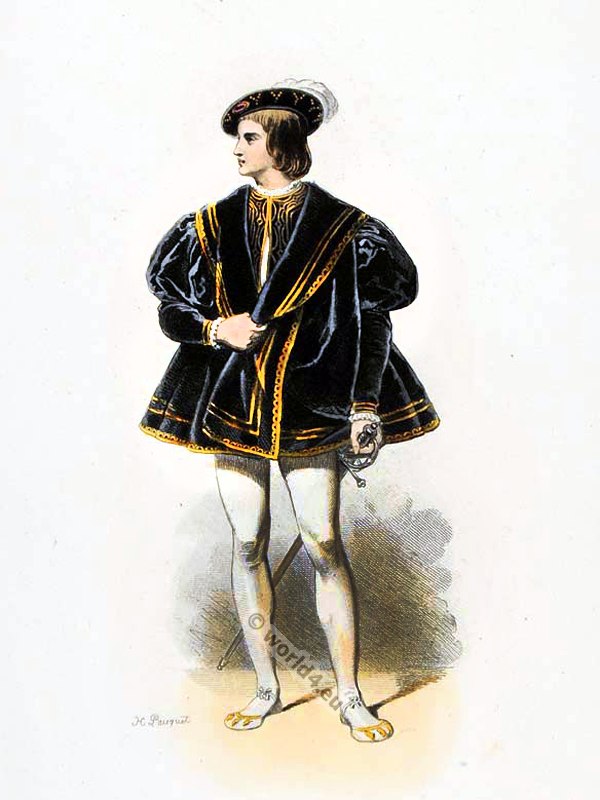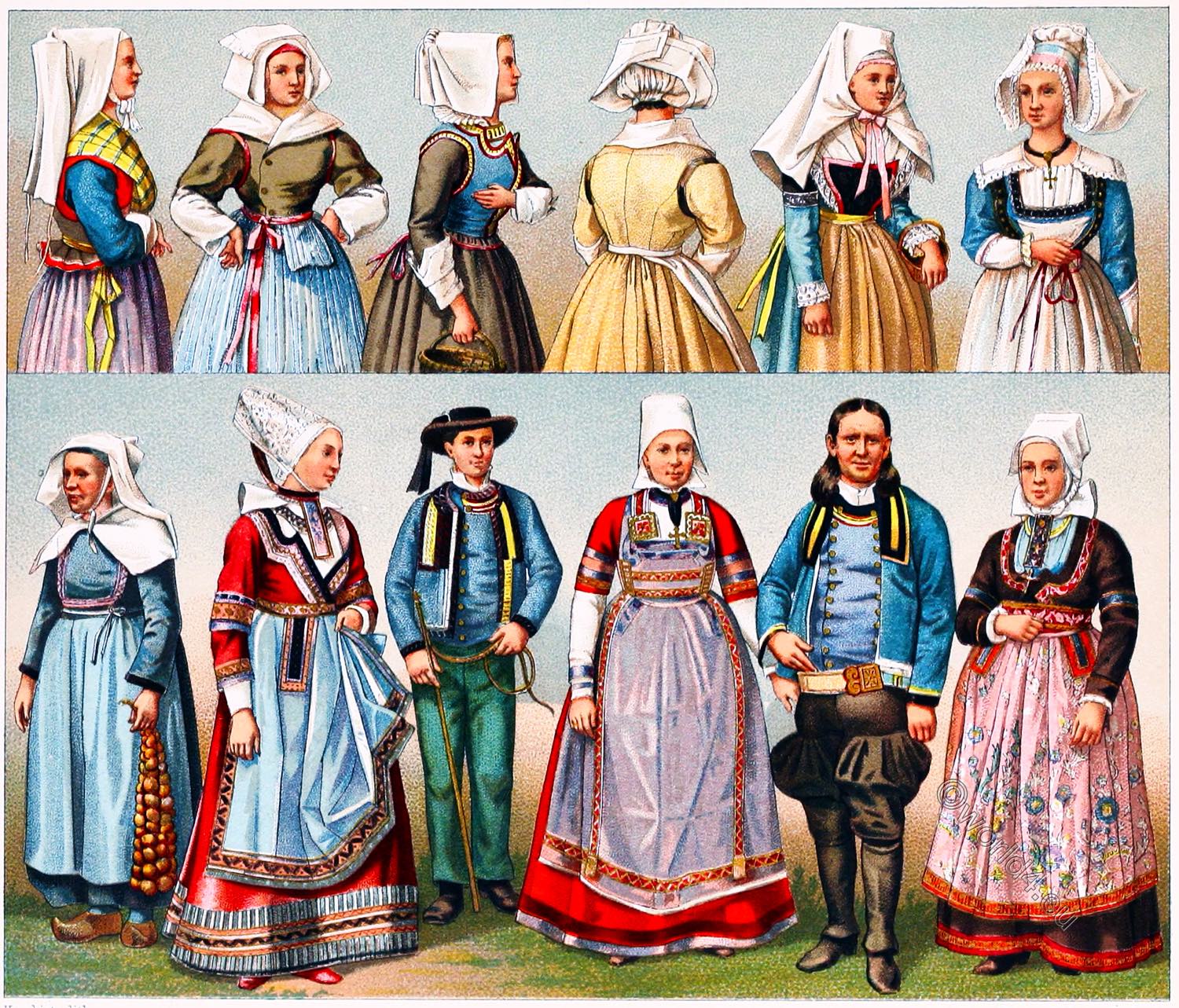
FRANCE. FOLK COSTUMES OF BRITTANY. DÉPARTEMENT FINISTÈRE.
- No. 1. farmer’s wife from Plougastel-Daoulas (Breton Plougastell-Daoulaz), Arrondissement Brest. Linen or calico bonnet with barbs and bows. Bodice in blue cloth with sleeves. Waistcoat in red cloth; jacket in brown cloth; wool skirt; belt in yellow ribbons; breast cloth in yellow calico with blue stripes.
- No. 2. woman from Plonévez-du-Faou (Breton Plonevez-ar-Faou), Arrondissement Châteaulin. Cap in calico over a cap in red wool; slightly stiffened collar in linen; jacket in cloth; wool skirt; apron, with a pocket in the front; a red wool ribbon as a belt.
- No. 3. woman from Douarnenez, Arrondissement Quimper. Bonnet in calico or linen; above the waist a blue sleeveless bodice with multicoloured trimming.
- No. 4. woman from Carhaix-Plouguer (Breton Karaez-Plougêr), Arrondissement Châteaulin. Skirt in light yellow cloth; linen apron; headdress in the same fabric.
- No. 5th woman from Kerlouan, Arrondissement Brest. Bonnet in calico (dense cotton fabric in linen weave), falling over the shoulders; breast cloth in the same fabric, trimmed with lace; skirt and waist in light blue cloth; calico apron.
- No. 6. maid from Quimper, in the costume of Rosporden. Cap, covered by a bonnet of muslin; breast cloth to the strongly stiffened canvas; above the blue waist a second, same-coloured bodice decorated with embroidery; white calico apron; over sleeves.
- No. 7th woman from Gouézec (Breton Gouezeg) near Châteauneuf-du-Faou, Arrondissement Châteaulin. Bonnet and collar in lightly embroidered calico; bodice and skirt in blue cloth; apron in lighter coloured calico.
- No. 8th Young female farmer from Ploaré *) near Douarnenez, Arrondissement Quimper. Bonnet made of lace or embroidered tulle; broadly pleated linen collar; a gold-embroidered ornament attached to the knotting band of the bonnet, falling over the “Hirvis”, the shirt; bodice and skirt of red fabric with gold embroidery; “tavanger”, apron of silk with gold embroidery; shoes of cloth, often with silk embroidery.
*) Ploaré is a former commune and parish of Finistère, which was annexed to that of Douarnenez in 1945.
- No. 9. farmer from Saint-Yvi (Breton Sant-Ivi) near Rosporden, Arrondissement Quimper. Felt hat (Toc) with long black velvet ribbons; blue waistcoat (Rokedennou); jacket (Corquen), made of the same cloth with embroidery; trousers of modern cut.
- No. 10 and 11. married couple from Kerfeunteun *), Arrondissement Quimper.
- No. 10 – Squared headdress in calico; stand-up collar in the same fabric: bodice and skirt in red cloth with silk ribbons; tavanger in silk with gold embroidery; gold cross on a black velvet ribbon; shoulder ribbon falling over the chest from both sides; cloth shoes.
*) Kerfeunteun is a former municipality north of Quimper and was incorporated into it on 1 January 1960.
- No. 11 – Blue Rokedennou with double row of buttons; triple corques in black velvet with light yellow embroidery; Bragou-bras *), wide puff trousers in cloth; Gouriz, leather belt with pierced and chiselled copper plates always worn with the Bragou-bras; Houseaux in the same fabric as the Bragou-braz; leather shoes.
*) Bragou bras, or bragou braz: large knee-length bloomers worn with woolen leggings.
- No. 12th woman from Plonévez-Porzay (Breton Plonevez-Porzhe), Arrondissement Châteaulin. Square bonnet (cf. no. 10); wide pleated collar, bodice and skirt in brown embroidered cloth; wide belt in similarly embroidered ribbon; tavanger in floral and embroidered silk.
- No. 7, 8, 9, 10, 11 and 12 after photographs.
Cf. Émile Souvestre, Le Foyer breton: contes et récits populaires und Élisée Reclus, Géographie universelle.
Continuing

